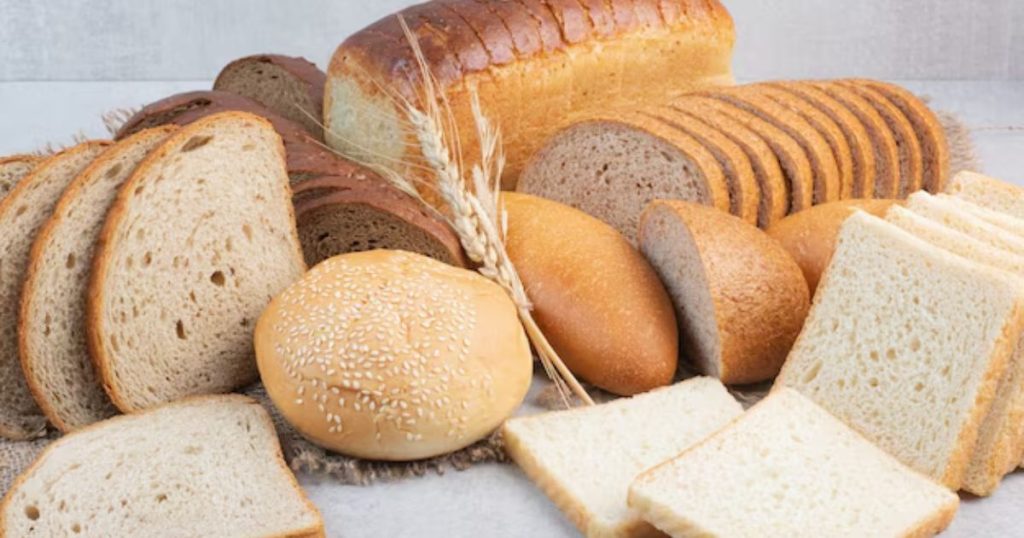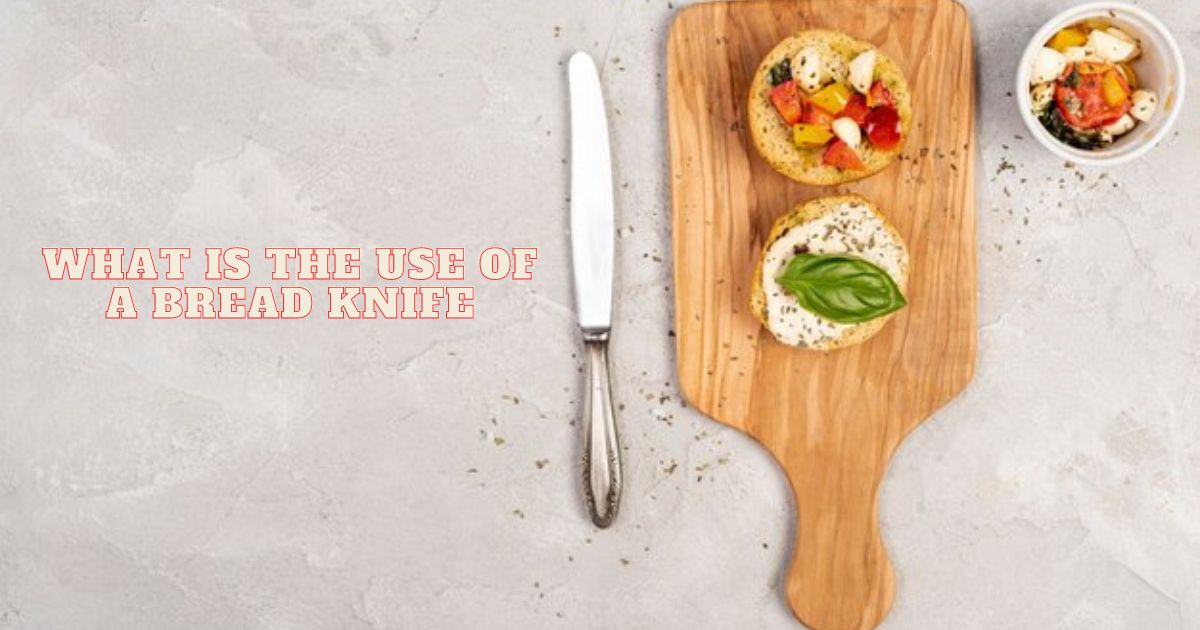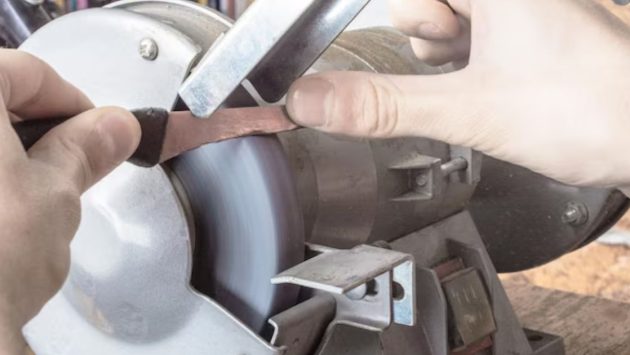“Carve, Cut, Conquer: The Ultimate Guide to Mastering Your Bread Knife
Table of Contents
ToggleIntroduction
In the bustling symphony of pots clanging and stovetops sizzling, the kitchen stands as the heart of every home. Amidst the array of culinary tools and gadgets that adorn this sacred space, one often-underappreciated hero emerges—the humble yet indispensable bread knife.
This unsung champion of the kitchen effortlessly glides through loaves of fresh-baked goodness, but its utility extends far beyond the realm of crusty baguettes and fluffy brioche.
In this exploration, we unravel the mysteries behind the bread knife, dissecting its anatomy, celebrating its versatility, and uncovering the secrets to perfecting the art of bread slicing.
Join us on a journey through the world of kitchen essentials as we unveil the varied uses of the bread knife, a blade that transcends the boundaries of breadboxes and transforms everyday cooking into a seamless, slice-of-life experience.
Definition and design of a bread
- A bread knife, a quintessential component of any well-equipped kitchen, boasts a distinct design tailored to tackle the unique challenges posed by various bread textures.
- Characterized by a lengthy, serrated blade, the bread knife is meticulously crafted to effortlessly navigate through both soft interiors and crusty exteriors of bread without squashing or tearing.
- The serrations, or teeth, are a defining feature, resembling small, jagged waves along the blade’s edge. This serrated design serves a dual purpose: first, it pierces through the crust without crushing the delicate crumb beneath, and second, it enables a smooth, sawing motion, ensuring clean slices with minimal effort.
- Complemented by a comfortable handle, the bread knife provides optimal control during use, making it a reliable tool for both amateur cooks and seasoned chefs alike.
- This purposeful combination of form and function renders the bread knife an indispensable ally in the culinary realm, transcending its role as a mere utensil to become a precision instrument for gastronomic craftsmanship.
What are the distinctive characteristics of bread knife?
- The bread knife stands out in the crowded realm of kitchen cutlery due to its unique features, setting it apart from other knives in the culinary arsenal.
- The most distinctive element is, undoubtedly, the serrated edge. Unlike the smooth blades of most kitchen knives, the bread knife’s edge is adorned with small, pointed serrations resembling a saw.
- These serrations are strategically designed to pierce through the crust of bread without compressing the soft interior, ensuring each slice is clean and precise.
- This serrated design grants the bread knife the ability to effortlessly cut through even the crustiest artisan loaves, a feat that would challenge traditional knives.
- Additionally, the length of the blade is often longer compared to standard kitchen knives, providing the necessary reach to cut through wide or oversized loaves with ease.
- The marriage of the serrated edge and extended length renders the bread knife an unparalleled specialist, excelling in tasks where other knives may falter, making it an indispensable tool for any culinary enthusiast.
Versatility in the Kitchen
While the name may suggest a narrow focus on slicing bread, the bread knife surprises with its remarkable versatility in the kitchen.
Beyond its mastery of crusty baguettes and delicate pastries, this knife emerges as a multifunctional tool capable of handling an array of culinary tasks. One notable application lies in the seamless slicing of cakes.
The serrated edge navigates through layers of frosting and sponge without crushing the delicate structure, ensuring each serving is as visually appealing as it is delicious. Furthermore, the bread knife exhibits finesse in tackling fruits and vegetables.
Its serrations provide a gentle yet effective means of slicing through the toughest skins or rinds, making it a reliable companion for preparing a medley of fresh produce. From tomatoes to pineapples, the bread knife’s versatility shines through, showcasing its adaptability beyond the realm of baked goods.
This unexpected range of applications positions the bread knife as a must-have in any kitchen, transcending its traditional role and earning its place as a versatile and indispensable culinary companion.
How can its mastery in the skill of slicing bread be characterized?
A dull blade can lead to tearing and uneven slices. When positioning the knife, the key is to use a gentle sawing motion rather than applying excessive pressure. The serrated edge should do the work, allowing for a smooth, controlled cut.
Consider the type of bread being sliced. For soft loaves, like a classic baguette, it’s beneficial to slightly angle the knife to prevent excessive compression. Crusty bread, on the other hand, benefits from a straight, vertical motion to tackle the tough outer layer effectively.
Hand positioning plays a pivotal role. Gripping the knife with a firm yet comfortable hold, with fingers positioned away from the blade, ensures safety and control. For larger loaves, consider using a slicing guide or a steady cutting board to maintain uniformity in slice thickness.
Lastly, patience is key. By embracing a methodical approach and incorporating these techniques, one can truly master the art of bread slicing, transforming a seemingly routine task into a culinary skill that enhances the presentation and enjoyment of every loaf.
What are the types of bread?

The effectiveness of a bread knife is amplified when paired with the right types of bread. Different bread textures and crusts require specific features of the bread knife to shine. Here’s a breakdown of the types of bread best suited for a bread knife:
Soft and Fluffy Breads:
Description: breads with a soft, tender crumb and a thin or soft crust.
Examples: white sandwich bread, brioche, and challah.
Why a Bread Knife? The serrations provide a clean cut without squashing the soft interior.
Artistic or Decorative Loaves:
Description: Bread with intricate designs or added ingredients.
Examples: artistically decorated loaves; bread with nuts or seeds.
Why a Bread Knife: Precision slicing is crucial to showcase the details without damaging the structure.
Warm or freshly baked breads:
Description: Breads that are still warm from the oven.
Examples: any type of bread when freshly baked.
Why a Bread Knife? The serrated edge minimizes resistance, allowing for smoother slicing without deforming the loaf.
Crumbly or delicate pastries:
Description: Pastries with flaky or delicate layers.
Examples: croissants, Danish pastries, puff pastry.
Why a Bread Knife? The serrations cut through layers without crushing the delicate structure.
How can we clean and store the bread knife properly?

Proper cleaning and storage are essential for maintaining the longevity and effectiveness of a bread knife. Here’s a guide to ensuring your bread knife remains in top condition:
Cleaning:
Hand wash only:
Always hand-wash your bread knife. Avoid using a dishwasher, as the harsh detergents and high water pressure can damage the blade and handle.
Gentle Scrubbing:
Gently scrub the blade with a soft brush or sponge. Pay attention to the serrated edges to ensure all debris is removed.
Dry Immediately:
After washing, dry the knife immediately with a soft towel to prevent any moisture from causing corrosion.
Storing:
Knife Block or Magnetic Strip:
Store your bread knife in a knife block or on a magnetic strip. This keeps the blade protected and prevents contact with other utensils that could cause damage.
Blade Guards:
Consider using blade guards, especially if storing the knife in a drawer. These guards protect the blade from getting nicked or damaged and also enhance safety.
Avoid Clutter:
Store the bread knife separately from other utensils to prevent accidental damage to the blade or injuries when reaching for it.
Protect the edge:
Be mindful of the serrated edge. Avoid storing the knife in a way that could cause the serrations to come into contact with hard surfaces.
Choosing the Right Bread Knife
Here’s a leader to help you make an up-to-date choice:
Blade Material:
High-carbon stainless steel combines the benefits of stainless steel with increased sharpness and edge retention.
Serration Style:
Double-serrated: Some bread knives have serrations on both sides of the blade, providing additional cutting efficiency.
Offset Serrations: Serrated edges that are offset can enhance cutting performance and make it easier to use the full length of the blade.
Blade Length:
Consider the bread types: Choose a length based on the types of bread you commonly slice. Longer blades are suitable for large loaves, while shorter ones may be more manoeuvrable for smaller breeds.
Handle Design:
Comfort and Grip: Opt for a handle that feels comfortable in your hand and provides a secure grip, especially during extended use.
Full Tang Construction: A full tang (where the blade extends through the handle) adds stability and durability.
Weight and Balance:
Balanced Weight: Look for a knife with a balanced weight distribution between the blade and handle. This contributes to better control during slicing.
Brand Reputation:
Research Brands: Consider reputable brands known for producing high-quality kitchen knives.
Your Budget:
Quality vs. Budget: Invest in the best-quality knife your budget allows. A well-crafted bread knife can be a long-term kitchen companion.
Additional Features:
Easy to Sharpen: Choose a knife that is easy to sharpen or has a blade that maintains its sharpness well.
Dishwasher Safety: While hand washing is generally recommended, if dishwasher safety is crucial to you, choose a knife explicitly designed for it.
Try before you buy:
Visit a Store: If possible, visit a kitchenware store to handle different knives. The feel and balance of a knife can be subjective, and personal preference plays a significant role.
Warranty and Customer Support:
Check Warranty: Look for knives with warranties, and be aware of the manufacturer’s customer support policies.
Conclusion
In conclusion, the bread knife emerges as an unsung hero in the culinary realm, proving its indispensability far beyond what its name suggests. From effortlessly gliding through the crust of artisan loaves to delicately slicing pastries and cakes, this versatile tool showcases its prowess in enhancing the art of bread slicing and more.
The carefully designed serrated edge, the balance of the blade, and the ergonomic handle contribute to a seamless cutting experience. As we unravel the intricacies of choosing, using, and maintaining a bread knife, it becomes evident that this kitchen essential is not merely a utensil but a precision instrument that transforms ordinary moments in the kitchen into a slice of culinary excellence.
Whether you’re a home cook or a seasoned chef, investing in the right bread knife becomes a key decision in elevating your kitchen adventures, making every slice a testament to the marriage of form and function in the world of kitchen essentials.
FAQS
Why do I need a bread knife when I already have a chef’s knife?
- Answer: While a chef’s knife is useful, a bread knife’s jagged edge is exactly designed to cut many bread qualities without a conspiracy of silence or scratching. Make sure to make clean and exact cuts.
Can I use a bread knife for cutting other foods besides bread?
- Answer: Absolutely! A bread knife’s serrated edge makes it versatile for slicing delicate pastries, cakes, and even fruits and vegetables with tough skins, showcasing its usefulness beyond just bread.
How often should I sharpen my bread knife?
- Answer: The frequency of sharpening depends on usage, but it’s generally recommended to sharpen your bread knife regularly, especially if it starts to feel less effective. A sharp blade ensures smoother and more efficient cutting.
Can I use a bread knife for warm or freshly baked bread?
- Answer: Yes, a bread knife is an excellent choice for slicing warm bread. The serrated edge reduces resistance, allowing for smoother cuts without deforming the loaf.
Do I need a specific type of bread knife for different bread varieties?
- Answer: While a standard bread knife can handle a variety of bread, considering the specific type of bread you commonly slice is beneficial. For instance, a longer blade may be suitable for large loaves, and different serration styles can enhance performance on specific bread textures.




